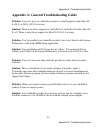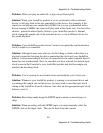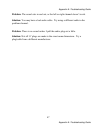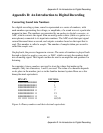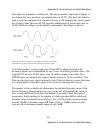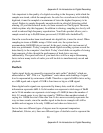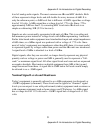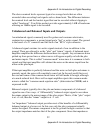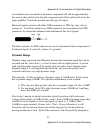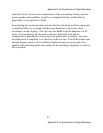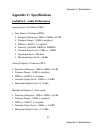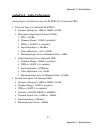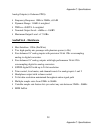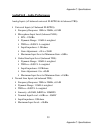Appendix B: An Introduction to Digital Recording
52
Appendix B: An Introduction to Digital Recording
The above nominal levels represent typical or average levels that are often
exceeded when recording loud signals such as drum beats. The difference between
the nominal level and the loudest signal that can be recorded without clipping is
called “headroom”. Your Echo product provides approximately 14dB of headroom
allowing an 18dBu signal to be recorded.
Unbalanced and Balanced Inputs and Outputs
An unbalanced signal, commonly used for guitars and consumer electronics,
contains two components, a ground signal and a “hot” or active signal. The ground
is the barrel of a ¼” connector and the shell of an “RCA” style connector.
A balanced signal contains two active signals instead of one in addition to the
ground. These are referred to as the “plus” and “minus” signals. A balanced input
amplifier amplifies the difference between these two signals. Any extraneous noise
picked up from power lines or other sources will appear equally on both the plus
and minus inputs. This is called “common mode” noise since it is common to both
signals and the input amplifier will subtract the noise on the minus input from the
noise on the plus input.
If the input amplifier is perfectly balanced and the noise on both plus and minus is
precisely equal, the noise will completely cancel out. In the real world this is not
the case and some of the common mode noise will still make it through, although
at a much reduced level. How well an input amplifier rejects this common mode
noise is called the “common mode rejection ratio” (abbreviated as CMRR) and is
expressed in dB.
Balanced outputs typically drive the plus and minus components of a balanced
signal in one of two ways. A “differentially” balanced output signal is one where
the minus output is the mirror image of the plus output. That is, if the “plus” output
is at +1 volt, then the “minus” output is at –1 volt.
An “impedance” balanced output provides most of the benefits of a differentially
balanced output at a lower cost. In this case only the plus component actually
carries the signal. The minus component is tied to ground through a resistor so that
the output impedance matches that of the plus component. Since the impedances



